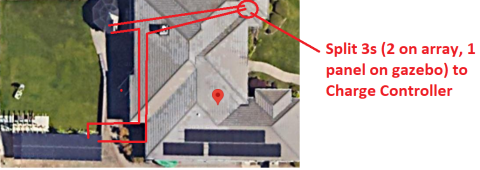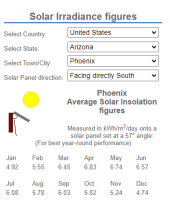Julian-Indaiatuba
New Member
- Joined
- Nov 5, 2019
- Messages
- 45
I have ten 330W panels in series about 100ft from my inverter on a 48V system. There’s another 330W panel I used to use for another smaller 24V system, which now is no longer in use. This panel is about 20ft from my inverter.
My inverter supports up to 500V VDC, so I was thinking adding the other panel. Could I just connect it in series with the others, even if it’s about 80ft away, or do I need to place it as close to the others as possible?
I would be so much easier if I could leave the single panel in place, as it is fixed to te roof, and I don´t really have any extra space where the other 10 panels are mounted.
Specs of all panels:
Nominal Max. Power (Pmax) 330 W
Opt. Operating Voltage (Vmp) 32.2 V
Opt. Operating Current (Imp) 10.24 A
Open Circuit Voltage (Voc) 39.2 V
Short Circuit Current (Isc) 10.82 A
Thanks in advance for any suggestions.
My inverter supports up to 500V VDC, so I was thinking adding the other panel. Could I just connect it in series with the others, even if it’s about 80ft away, or do I need to place it as close to the others as possible?
I would be so much easier if I could leave the single panel in place, as it is fixed to te roof, and I don´t really have any extra space where the other 10 panels are mounted.
Specs of all panels:
Nominal Max. Power (Pmax) 330 W
Opt. Operating Voltage (Vmp) 32.2 V
Opt. Operating Current (Imp) 10.24 A
Open Circuit Voltage (Voc) 39.2 V
Short Circuit Current (Isc) 10.82 A
Thanks in advance for any suggestions.




